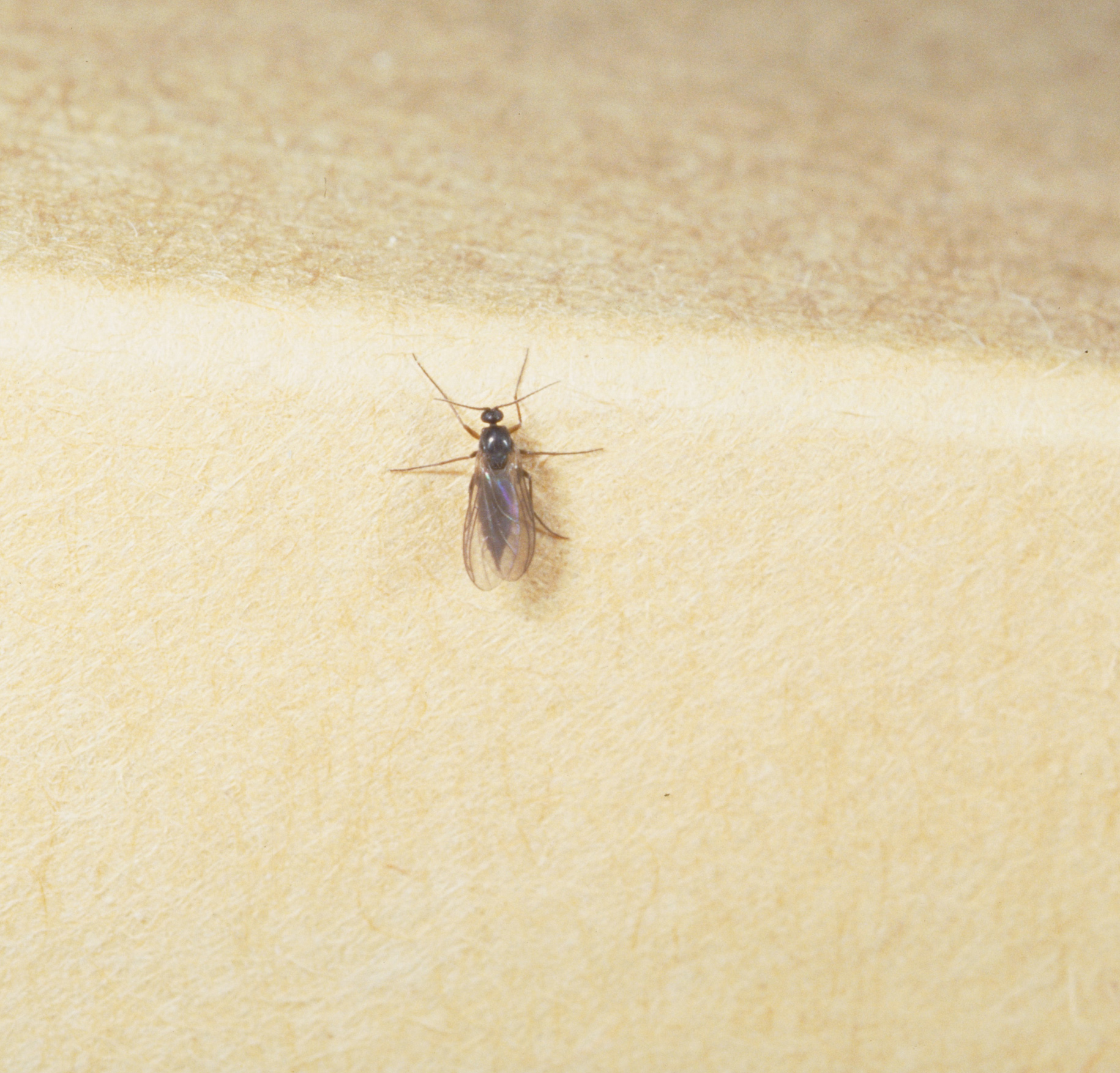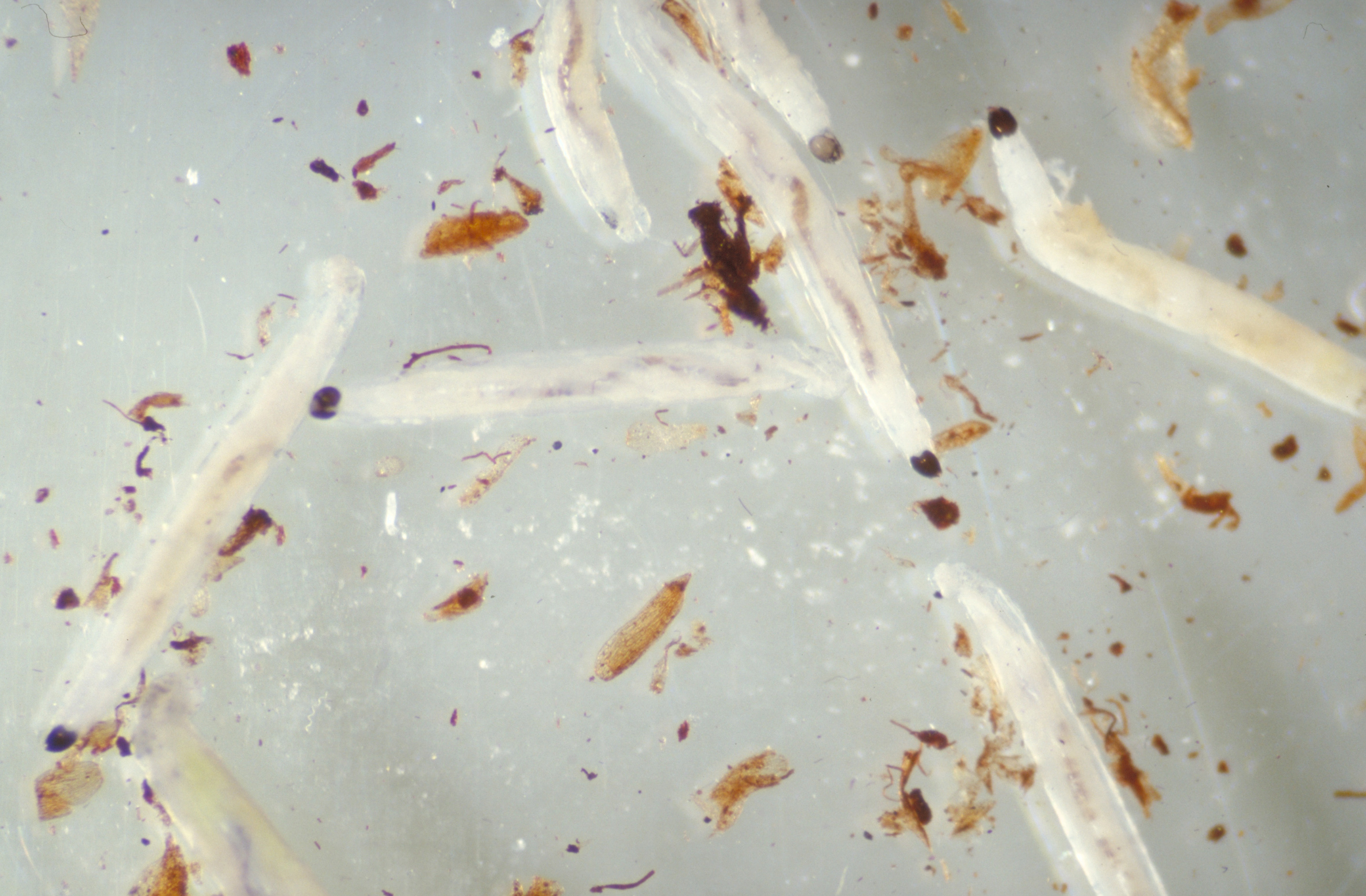Fungus Gnats
Return to Insect & Other Arthropod Pests
Fungus gnats (Family Sciaridae) are small, delicate, dark-bodied, slender flies. Adult flies are about 1⁄10 inch in size and have long antennae, slender legs, and a tapering spindle-shaped abdomen. Larvae are legless with white bodies and dark head capsules about the size of poppy seeds. Larvae, which primarily feed on fungi, algae, and organic matter, require continuously wet conditions to develop. While adult flies are not damaging, large numbers of larvae can injure roots and stunt plant growth.

Fungus gnat adult.
(Photo: Ric Bessin, University of Kentucky)

Fungus gnat larvae.
(Photo: Ric Bessin, University of Kentucky)
Management:
- Controls are directed toward larvae rather than adults.
- Avoid continuously wet soil/media.
- Eliminate standing water and repair irrigation leaks.
- Place raw potato slices on soil surfaces to attract and monitor for larvae.
Biological control:
- Use entomopathogenic nematodes and predatory mites or apply soil drenches containing Bacillus thuringiensis israelensis.
- Other options include predatory mites.
